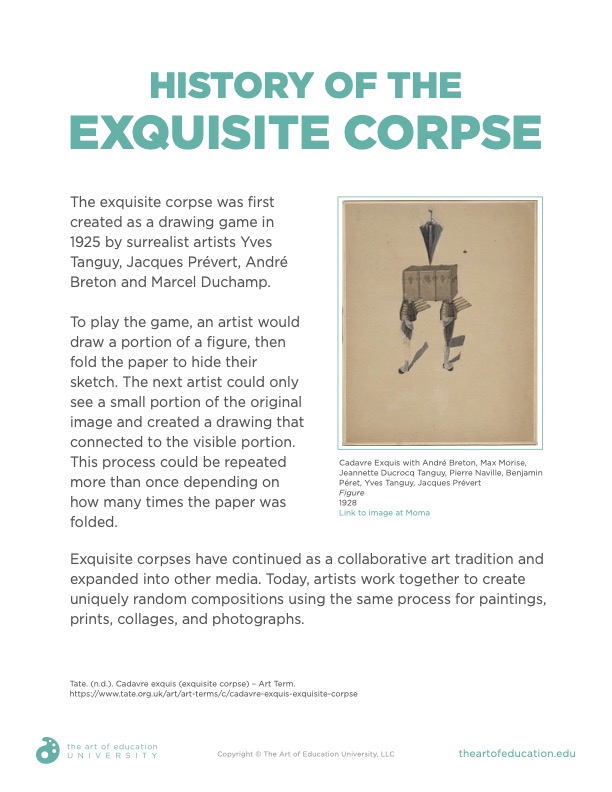We have all been there, standing in the art room, wondering, “What do I do with my students today that will only take today?” In addition, there is the desire for authentic learning and creativity, making the planning process seem very overwhelming.
In the elementary art room, the schedule can be rather unpredictable, to say the least. Often, students attend art once a week. This seemingly standard protocol can be interrupted by special events, snow days, substitute guest teachers, that last random day with students before summer break, and really—you name it. These challenges may necessitate one-day art experiences for student engagement.
Consider these fifteen one-day art prompts, activities, and practices for the elementary art room.
1. Oops Box
Elementary art teacher Sarah Rough facilitates a TAB-based classroom for her students. One of her ongoing practices is an Oops Box. This box is where students put drawings they aren’t satisfied with for other students to discover later. A new student can be inspired by a misshapen cat form or a hand drawing that didn’t turn out “right.” The “oops” becomes part of someone else’s creative experience. By establishing a process ahead of time, students can be self-directed for one-day artmaking experiences. Read Beautiful Oops! by Barney Saltzberg to introduce the concept.
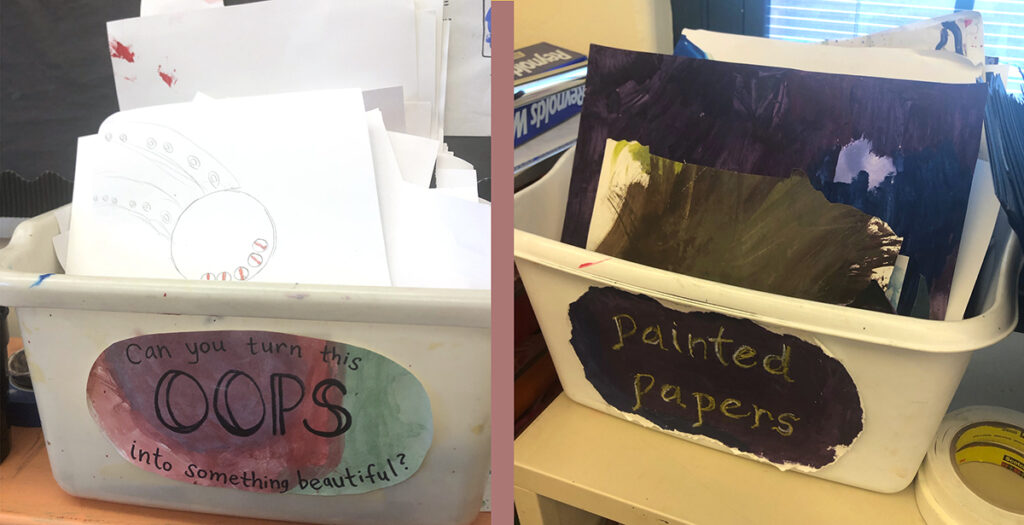
Sarah also has a Painted Papers bin for abandoned paintings. Students can discover papers to use in collage or as their own painting surface. Turning one person’s “oops” into another’s creativity may be a one-day experience but is a lesson that is transferable throughout life.
2. Shape Monsters
Many of us have some variation of the Oops Box or the Painted Papers bin. Scraps of paper seem to be everywhere in the art room. Establish a container for student artists to collect usable scraps of paper for other students to use in their work. Why not turn scraps of paper into monsters?
For this lesson, students locate a paper scrap that interests them. Glue the scrap to a background paper. Using drawing materials, turn the scrap shapes into monsters. The greatest thing about monsters is that they can take on any unique form. Embellish with google eye stickers for emphasis.
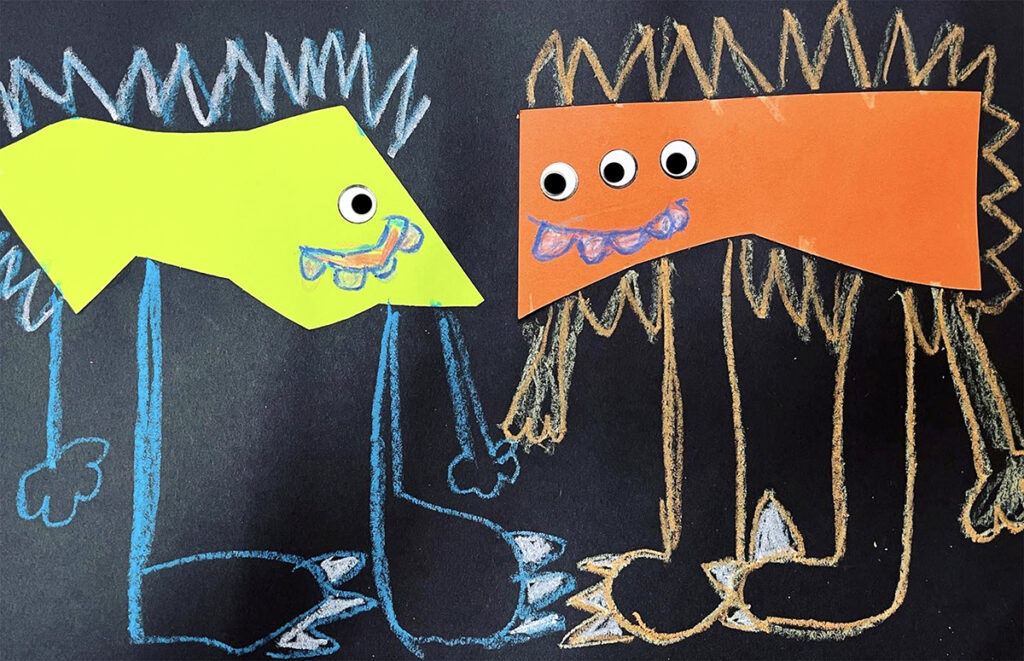
Some great reads to accompany these creative creatures are:
3. Calendar Monsters
Cut paper monsters aren’t the only monsters that students can explore. How about monsters drawn with permanent markers sneaking through photographic landscapes? Collect outdated landscape calendars or purchase a set from a dollar store. Students spend the class time using permanent markers and white gel pens to add monster figures to their chosen background. This is a great artmaking experience for home or at school. To read more about this lesson (with more similar ideas), check out the article 5 Lessons That Are Effective at Home or School.
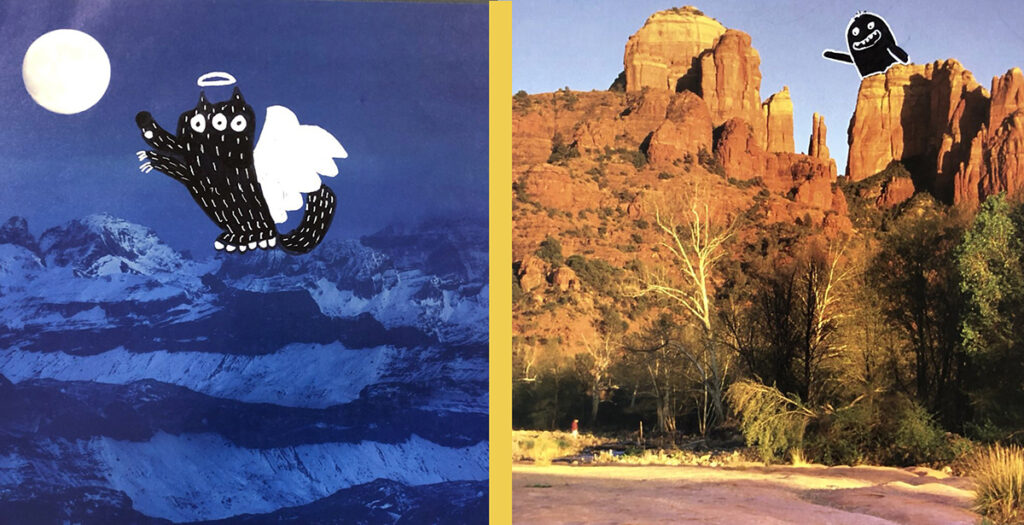
4. Exquisite Corpse
The Exquisite Corpse is a famed Surrealist drawing exercise. Today, it can engage students for one day and inspire them for much longer. Students work in groups of three and fold rectangular papers into three sections. Each student draws the head of an animal, monster, or person in the first rectangle of their paper. They all fold their drawn portions over and pass their pages to the right. Then, each of the three draws a torso on the middle section, unknowing of what type of head lies beneath. The three students fold the torso beneath and pass their papers. In the final round, each student draws feet for the unknown figure below. After everyone is done, the figures are delightfully revealed. The students can add backgrounds, color, texture—or simply begin the fun process again.
Use the History of the Exquisite Corpse handout below to get started. For more resources like this, check out Digital Photography Basics found in FLEX Curriculum.
Download Now!
5. Jim Dine Hearts
A single day is a perfect opportunity to work on complicated yet necessary skills like cutting. Develop scissor challenges for students or a lesson in symmetrical cutting. It is surprising how many students do not know how to cut shapes, such as hearts, by folding a paper in half.
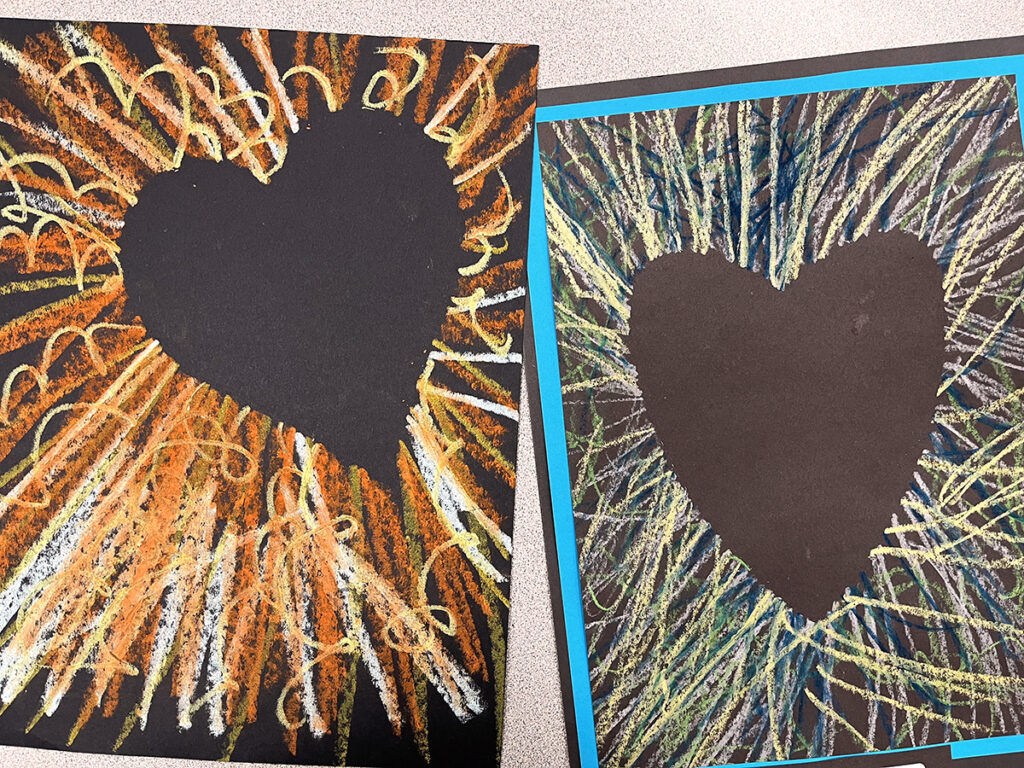
Introduce students to the heart-infused work of Jim Dine. Teach students how to cut out a symmetrical heart and tape this shape to black paper with a piece of masking tape. Students use oil pastels to draw lines and shapes that begin in the center of the heart and extend to the background. They can remove their cut paper, revealing a heart in the negative space. For more Jim Dine-inspired ideas, take a look at this article.
6. Pixel Magnets
Space Invader is a street artist who creates pixel characters out of ceramic tiles and hides them in locations around the world. Photocopy small grids of squares for students to develop their own pixelated characters using markers. The small scale allows students to try out different characters. The grids can be cut out and attached to a mat board with a magnet on the back. Students can move their invaders around onto magnetic surfaces. Alternatively, attach a pin to the mat board to make wearable street art.
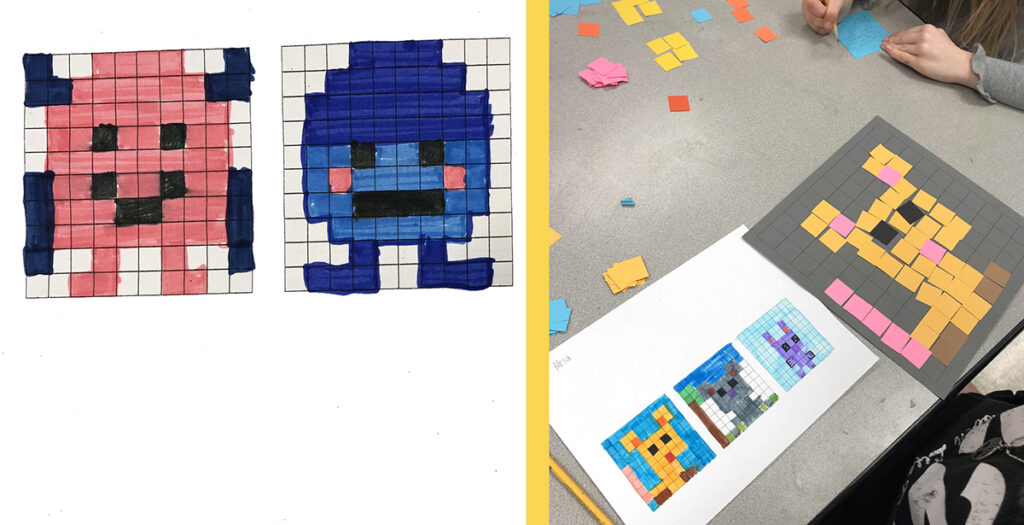
If you want to take this lesson one step further, use the marker renderings as a reference for future paper mosaic invaders. Hide them throughout the school for students to discover.
7. Origami Boxes and Patterned Animals
While we enjoy origami, we may struggle to see how these skills fit into a more significant lesson. Take the day and inspire students to create their own future possibilities. Share an origami tutorial video with the class, hitting pause to check for understanding. An origami box has many transferable uses, including Instant Comfort Pocket Boxes. Try covering sheets of origami paper with hand-drawn designs to create origami animals with original patterns.
8. Penguins Don’t Wear Sweaters
Based on the true story of penguins on Phillip Island, Australia, this book chronicles the knitting efforts of well-meaning individuals worldwide. After an oil spill impacted penguins, knitters created tiny sweaters for the birds. Despite this fun challenge, the goal is always to provide a way for penguins to be naturally penguins in healthy, clean environments. Use this story as a catalyst to discuss conservation efforts and why people create art. Inspire students to design sweaters for penguins or other arctic animals.
9. Feathers for an Art Wings Installation
Provide each student with a feather reproduced on cardstock. Students decorate their feathers with colors, images, and designs that represent them as individuals. The feather becomes a self-portrait of each student and member of your school community. The feathers can later be combined to form a set of wings, speaking to the strength of the collective community. It’s also a great photo op for a school art show.
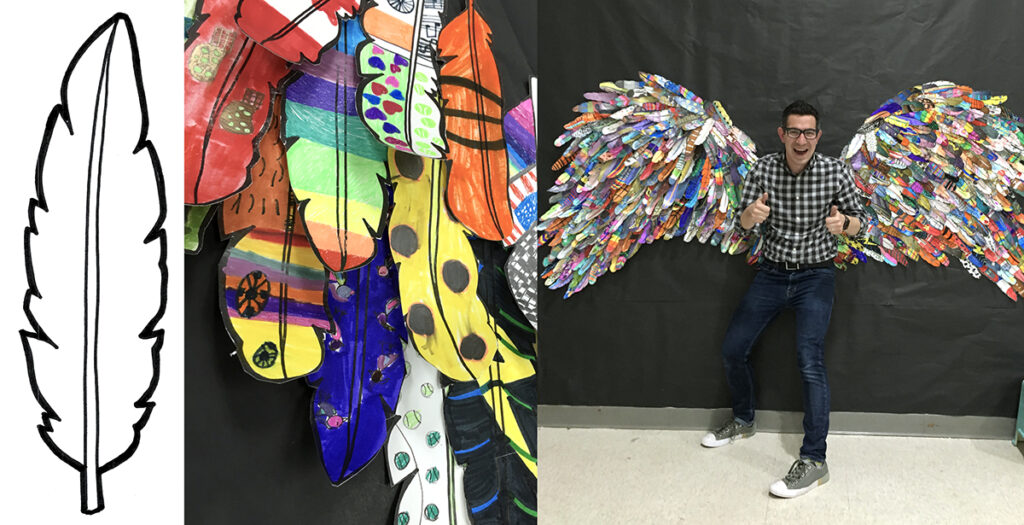
Some great reads to share with students are:
- Perfectly Norman (Big Bright Feelings) by Tom Percival
- Wings by Christopher Myers
- After the Fall (How Humpty Dumpty Got Back Up Again) by Dan Santat
10. Birds on Postcards
The artist Geninne Zlatkis is well known for her illustrations of birds. She works with and on various media, including vintage postcards. Pulling inspiration from this artist, provide students with postcards, permanent markers, and paint markers. Students use the postcards as a background matrix to create their own feathery friends.
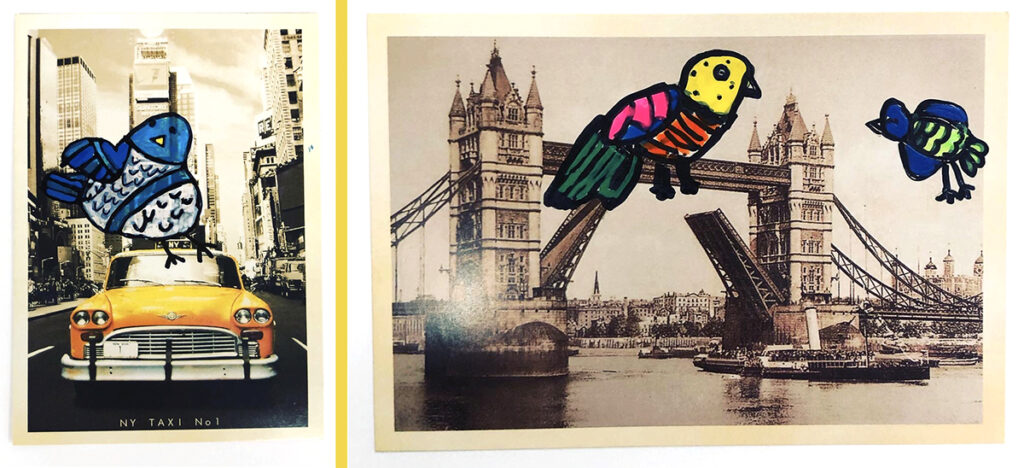
11. Leaf Painting
Collect dried or fake leaves as a drawing surface. Students use paint markers and the elements of art to decorate this unconventional drawing surface. The leaves can stand alone mounted on paper or attached to a branch wrapped in yarn. For a more detailed discussion of this lesson and other artmaking experiences centered on trees, check out the article “When I Am Among the Trees”—8 Prompts to Inspire Artmaking.
12. Contests and Challenges
As art educators, we often hear about design competitions, including Doodle for Google or the school’s yearbook cover design contest. Use class time to explore principles of design and their application to create impactful compositions. Instead of sharing these opportunities in passing, discuss them intentionally.
I had the honor of helping to design a Google Doodle for Teacher Appreciation Week in 2018. You can learn more about my experience and share it with students by visiting this article.
13. Notes to Teachers
Print encouraging statements on cardstock or watercolor paper. Make sure the papers are cut to standard frame sizes. Prompt students to explore materials such as oil pastel and watercolor resist around the outside of the text. Frame these pieces as gifts for staff during Teacher Appreciation Week or other days or recognition. To learn about other ways to recognize teachers, check out the article Why Teacher Recognition Is So Important.
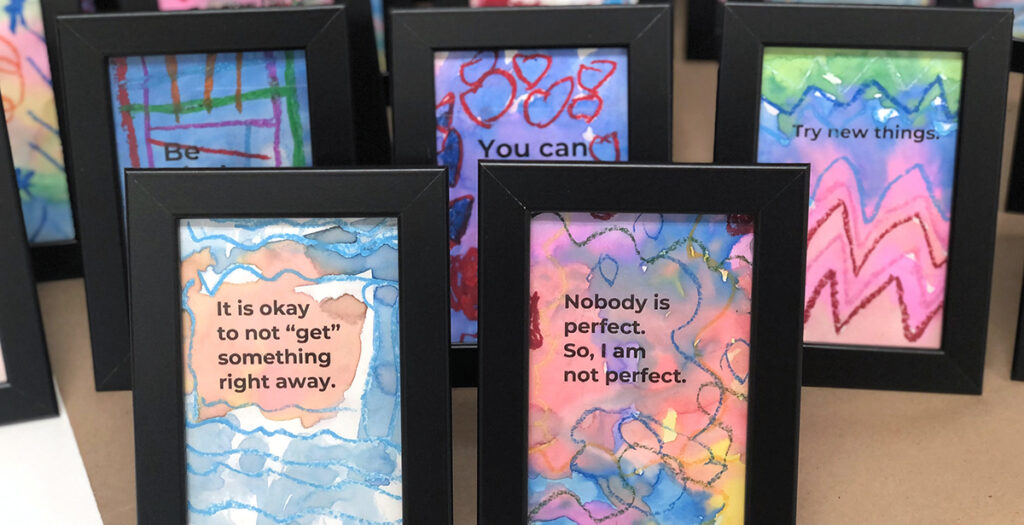
14. Blind Contour Drawing
Students practice their skills of observation and perseverance by engaging with blind contour drawing. Students study an object or one another and do their best not to look at their papers. Instead of focusing on perfection, they can learn about the item they are drawing. The final drawings can stand alone as works of art or prepare students for future artmaking endeavors.
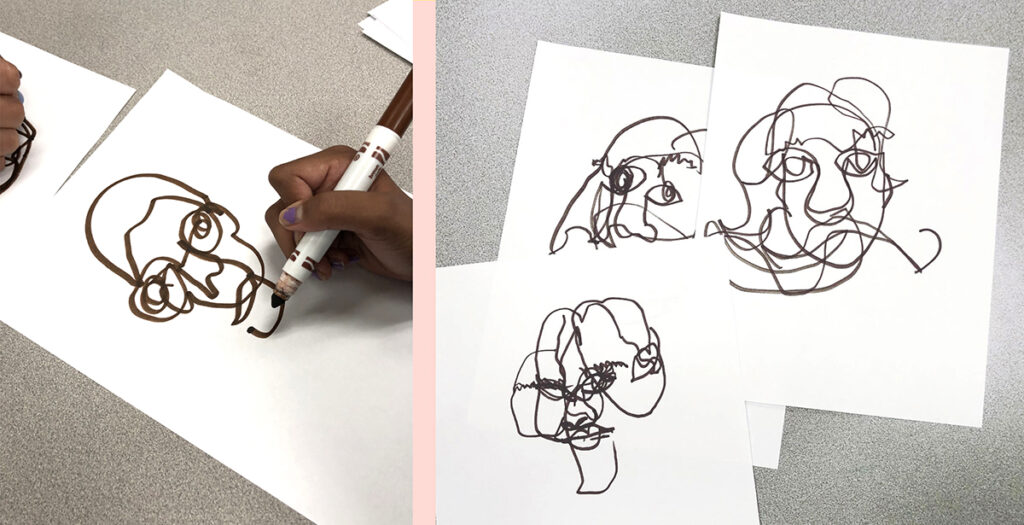
15. Not a Box
The book Not a Box by Antoinette Portis sparks creative thinking when a bunny reimagines what a cardboard box can become. Provide students with printouts of various-sized squares or cubes and prompt them to think creatively about what these different shapes can become. Want to go even further? Students can transform actual small cardboard boxes into untold possibilities.
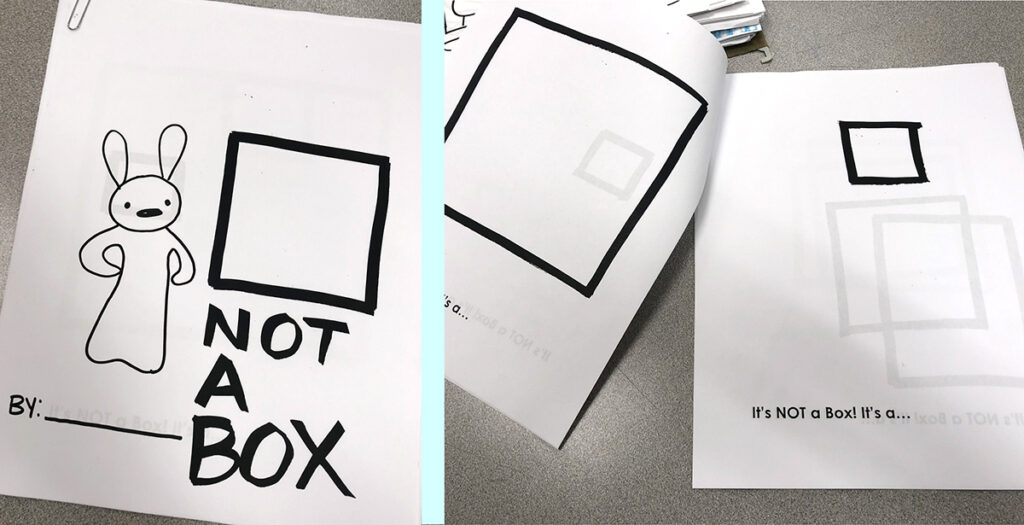
Assemble ahead of time by organizing resources, books, and supplies for possible one-day creative experiences in a single location. You never know when your preparedness will come in handy for those unexpected moments. The next time you face the challenge of engaging your students for a single day of meaningful artmaking, try one of these fifteen fun ideas.
What makes a one-day art lesson meaningful for your students?
How can you prepare now for a one-day artmaking experience later?
What potential scheduling interruptions are on the horizon at your school that will necessitate a one-day art lesson?
Magazine articles and podcasts are opinions of professional education contributors and do not necessarily represent the position of the Art of Education University (AOEU) or its academic offerings. Contributors use terms in the way they are most often talked about in the scope of their educational experiences.

